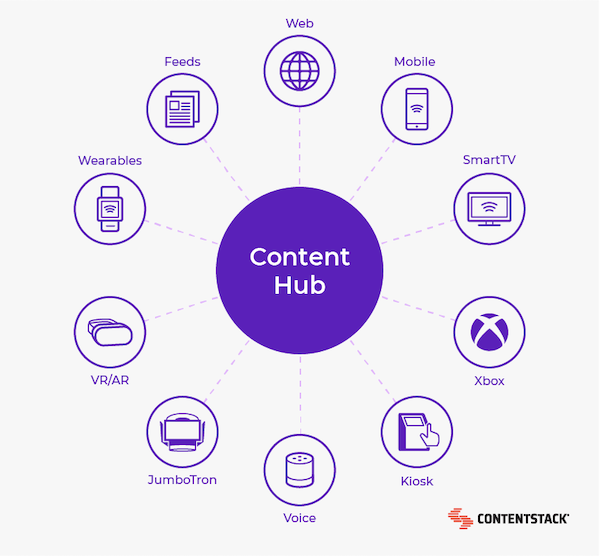Why you can’t run a modern enterprise without modern CMS architecture

A modern CMS architecture boosts your agility, speeds up publishing and positions you to adapt to new tech shifts. It is the right tool to empower your teams and transform your business through personalized and omnichannel experiences. Opt for a headless CMS to stay ahead of the competition.
Highlights
You'll learn why modern CMS architecture matters for modern enterprises:
- Agility in digital experiences: Easily adapt content for new platforms, audience segments and distribution channels
- Future-proof technology: API-driven structure ensures seamless updates and innovation
- Seamless collaboration: Centralized management boosts team productivity
Adopt headless CMS today to deliver personalized, omnichannel experiences and stay ahead of the competition!
2020 and 2021 brought more than just hardships—these pivotal years also provided lessons. A major lesson was that only change is constant.
According to Subrah Iyar, a leader in the enterprise software space, the biggest change today’s businesses need to be aware of is the growing importance of digital experiences.
Iyar said. “Businesses need to adopt digital solutions to keep customers satisfied and continue growing their businesses. This implies shifting customer engagement experiences to a ‘Pull' model from a ‘Push' model for doing business where customers are able to pull services on-demand rather than having businesses push their services onto a customer.”
Luckily, most enterprises already have the key resource that enables consumers to interact with them digitally and on-demand: content. However, most lack what it takes to manage this key resource. That is where modern CMS architecture comes into play.
What is modern CMS architecture?
It all began with the traditional content management system (CMS)—a software platform that combines content creation and management with control of the entire website experience. These monolithic suites worked for a while.
With many new content distribution channels today, legacy CMS platforms struggle to adapt without costly workarounds. Hence, the traditional CMS and the organizations that use it are in dire need of a modern CMS architecture: A headless CMS built on MACH principles.
MACH technology is based on microservices, connected via application programming interface (API) technology, stored and delivered via the cloud and built on headless architecture.
Is a headless CMS the modern CMS architecture?
A headless CMS removes the “head” or the presentation layer from the traditional CMS structure. It enables developers to build any experience they like with whatever language is best. They can also make changes without disrupting the presentation layer. It also empowers marketing users to create, update and publish content with ease.
You can plug in almost any content optimization tool, consumer data platform, etc. That means you can create content, reoptimize it and republish it to serve every channel, audience and experience. These principles and structures make MACH-built, headless CMS platforms the key element of modern CMS architecture.
7 Reasons why modern enterprises need modern CMS architecture
If you need more convincing before switching to headless CMS, here are several reasons to consider it.
1. Create and manage content that powers digital experiences
Content powers marketing, from social media messaging to articles, localized websites, smartwatch application notifications, personalized emails and beyond.

Your content provides consistent, contextual and effortless experiences with which consumers interact wherever and whenever they seek information or goods from your enterprise. This is what makes content the heart of the digital experience and, therefore, makes the CMS architecture you use to manage it integral to your success.
2. Infinite opportunities to update the customer experience
An inherent advantage of decoupling the front- and back-end with modern CMS architecture is that changes in each one do not have a negative impact on the other.
This enables businesses to transform content presentation—and, therefore, the customer’s experience—without limitations. Also, IT professionals are empowered to transform the underlying technology at any time, adopting the latest languages and distribution channels to keep consumers engaged.
3. Transform your business with modern content architecture
Content architecture is the process of naming all the little pieces that build great content — text, graphics, links and more. Enterprise businesses need a modern and effective content architecture that allows them to track and use each content element to its full potential. A modern CMS architecture offers that, enabling you to store, label, search and reuse content.
4. Excel in the modern, dynamic marketplace
With decoupled CMS architecture, businesses are prepared for today’s marketplace and whatever new consumer experiences and expectations may come up in the future. A headless CMS connects carefully planned decoupled components via API, giving you the flexibility to respond to tech or market shifts.
With your content tucked away in API-ready modules, you can always refresh your design, technology and experience without overhauling the entire CMS. Need to plug in a different database or update the underlying code base? A modern CMS architecture enables you to do this without any negative impact on the customer experience.
5. Enhance team productivity
Content creators and editors waste long hours on non-productive work like reworking copy and toggling between publishing platforms. A modern CMS architecture addresses that. It presents content in a single, centralized platform from where you can optimize, personalize and publish.
It also provides features like approval workflows, versioning, access controls and more. These features improve the productivity of content teams, as they can collaborate without the fear of overwriting vital marketing assets.
6. Stress-free iteration and improvement for marketing and IT
With headless CMS, development teams can iterate and improve upon existing technology without taking down the entire content experience at any time. A headless CMS also enables marketing teams to improve content and try out new channels without impacting existing campaigns that are performing well. These features empower organizations to be flexible and agile in the face of change.
7. Deliver the consistency and personalization that customers demand
Today’s connected consumers want two things above all: consistency and personalization. In fact, the majority of customers expect consistent levels of service across brand experiences, and 71% express frustration when that does not happen.

Headless CMS meets these demands by allowing brands to distribute personalized and consistent messaging across channels. Brands that create this personalized omnichannel experience for consumers can expect increased loyalty and advocacy in return.
Case studies
Good Eggs
Good Egg's mobile app was failing, and its legacy system could not support a modernized customer journey. However, after switching to a modern CMS architecture with Contentstack, it reignited its e-commerce and grew its monthly users to 20k.
"The benefit of using a tool like Contentstack is that the creative marketing teams can visually present inspiration to the user, so they see us as less of a utilitarian tool to buy dinner and more of a tool for inspiration and food storytelling." Chris Jocson said.
Continue to read to see how Good Eggs reinvented its user experience via a modern headless CMS.
RSA Insurance
RSA's content process was outsourced, eating up a large chunk of resources. They could not reuse content and did not have control of the process.
Switching to Contentstack's headless CMS, they were able to publish faster, improve website performance and engage their audience with more consistent content.
Kerri Thomas said. "The ability to make quick changes to quote and buy is huge. It's all now within our control to make changes, which was what we were looking for - to release on our own timeline. All in all, it’s a much more efficient way of working."
Read more to see how RSA Insurance transformed with a headless CMS.
When you may not need a headless CMS
At this point, you can tell that we believe modern enterprises should adopt headless CMS. But we also realize that context is everything. These are a few circumstances in which going headless may be more trouble than it is worth.
- Not publishing to multiple platforms: If you do not plan to ever publish beyond a single channel, you may stick with a traditional CMS. However, you will create content debt that will have to be paid if you ever decide to adopt an omnichannel marketing strategy.
- You have no access to technical talent: The original headless CMS platforms typically did not come with a presentation layer. So, if you get one, you would need some development experience to set it up. However, modern headless CMSes now offer a presentation layer using a decoupled approach.
FAQ section
What is a headless CMS architecture?
A headless CMS architecture is an approach to content management in which the back end acts as the primary content repository and is separated from the front end, making content accessible via APIs.
Why is it called headless architecture?
It is called so because of the separation of the content layer and the presentation layer.
Why is headless CMS better?
A headless CMS is built on MACH, making it flexible and agile. You can integrate microservices to enhance their functionalities, use APIs for content delivery and enjoy adequate computing power via the cloud.
Learn more
With content at the center of digital experiences, it makes sense to manage it with a cutting-edge platform. Headless CMS transforms customer experiences, streamlines content management and gives you the agility to adapt to market and tech shifts. This makes it ideal for the modern enterprise.
Contentstack offers a modern CMS architecture with its headless CMS, enterprise-grade security and solutions for automation and personalization. These tools enable you to overcome the bottlenecks of a traditional CMS and set you up for omnichannel success. Talk to us today to get started.
Updated: February 19, 2025
About Contentstack
The Contentstack team comprises highly skilled professionals specializing in product marketing, customer acquisition and retention, and digital marketing strategy. With extensive experience holding senior positions at renowned technology companies across Fortune 500, mid-size, and start-up sectors, our team offers impactful solutions based on diverse backgrounds and extensive industry knowledge.
Contentstack is on a mission to deliver the world’s best digital experiences through a fusion of cutting-edge content management, customer data, personalization, and AI technology. Iconic brands, such as AirFrance KLM, ASICS, Burberry, Mattel, Mitsubishi, and Walmart, depend on the platform to rise above the noise in today's crowded digital markets and gain their competitive edge.
In January 2025, Contentstack proudly secured its first-ever position as a Visionary in the 2025 Gartner® Magic Quadrant™ for Digital Experience Platforms (DXP). Further solidifying its prominent standing, Contentstack was recognized as a Leader in the Forrester Research, Inc. March 2025 report, “The Forrester Wave™: Content Management Systems (CMS), Q1 2025.” Contentstack was the only pure headless provider named as a Leader in the report, which evaluated 13 top CMS providers on 19 criteria for current offering and strategy.
Follow Contentstack on LinkedIn.






.svg?format=pjpg&auto=webp)
.svg?format=pjpg&auto=webp)
.png?format=pjpg&auto=webp)






.png?format=pjpg&auto=webp)


